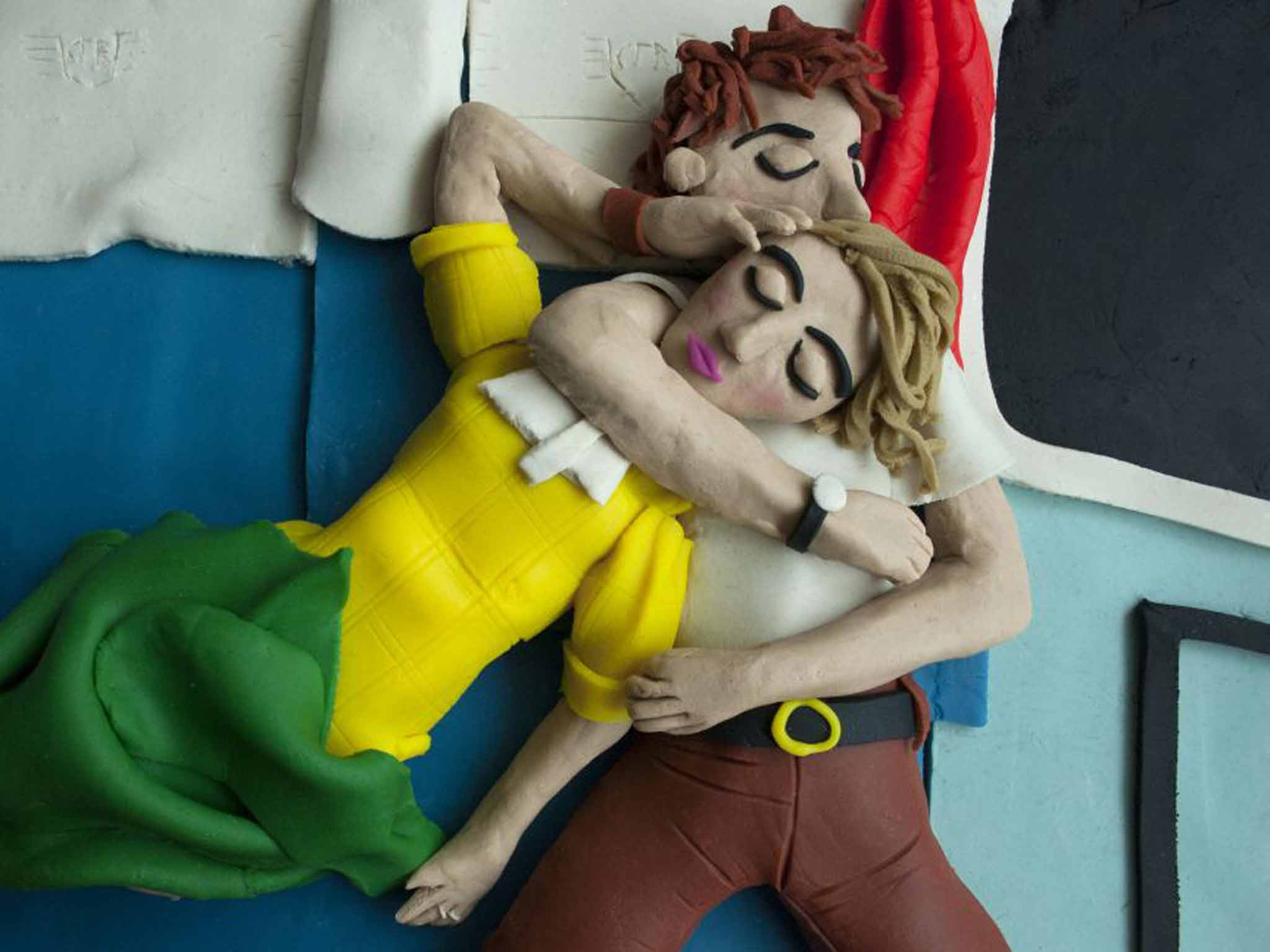Eleanor Macnair uses Play-Doh to refashion original works of art to moving effect
Eleanor Macnair's startling re-creations are lent pathos by her use of every child's favourite modelling material

Twenty years ago, you'd have had a hard time convincing anyone over the age of six that plasticine – or its American equivalent, Play-Doh – could be used to make works of art. But when Nick Park put his Yorkshire inventor Wallace and his pet dog Gromit into stop-frame animations and won several Oscars in doing so, he revealed that the squishy, evil-smelling, brightly coloured stuff could affect grown-up emotions too.
Eleanor Macnair takes her favourite photographs – some famous, some not – and reproduces them in Play-Doh. She works late at night using a chopping board, a blunt Ikea knife and a glass tumbler to create her faces and figures. Each image takes up to two hours of cutting and layering, is left overnight, photographed in the morning – then disassembled and the Play-doh is returned to its colour pots.
As the two-dimensional photo becomes 3D plasticine and returns to two dimensions, it acquires an indefinable new texture of plastic pathos. The wan beauty snapped by Julia Margaret Cameron in “Christabel” is reimagined by Macnair as a tragic depressive, her huge eyes lidded with sorrow, her pink Cupid's-bow mouth like a detachable organ, her hair a mad Medusa tangle. The sleeping lovers in Henri Cartier-Bresson's famous “Romania 1975,” take on an alarmingly violent quality when re-cast in primary-colour Play-doh. Tom Hunter's “The Way Home”, from his series Life and Death in Hackney is given more, not less pathos by having the supine girl depicted against the hedge of green strips that looms between her and the just-visible signs of home.
When Macnair began showing the results on tumblr and Instagram, the response was immediate. Her post-modernist Play-Doh images have been seen by thousands of people from the Congo to Kazakhstan, and published in book form. She makes the viewer gaze, uncomfortably, at serious images re-cast in nursery materials, like a child's crayon drawings of a war.
Eleanor Macnair's exhibition is on until 21 November at Atlas Gallery www.atlasgallery.com
Join our commenting forum
Join thought-provoking conversations, follow other Independent readers and see their replies
Comments